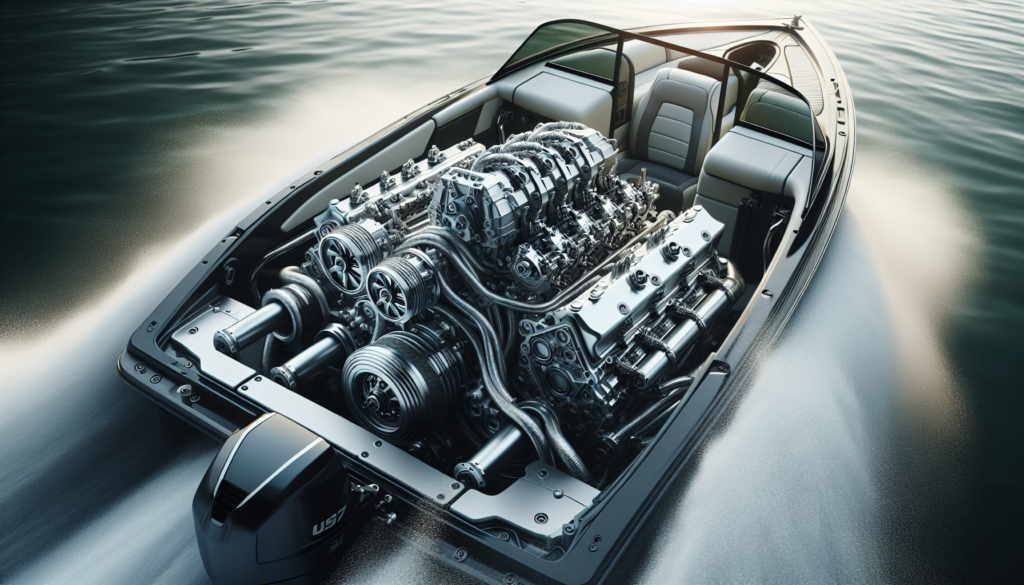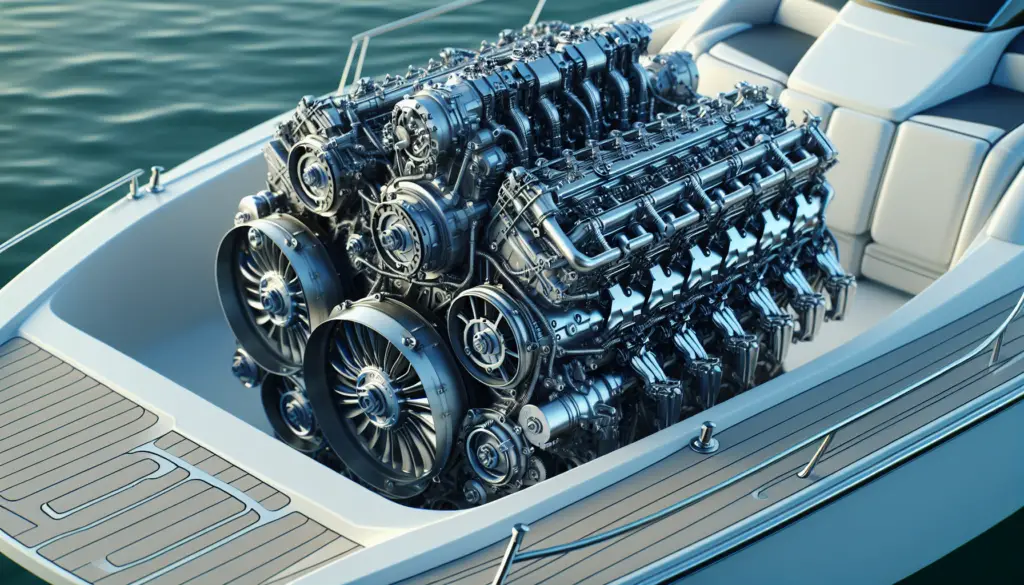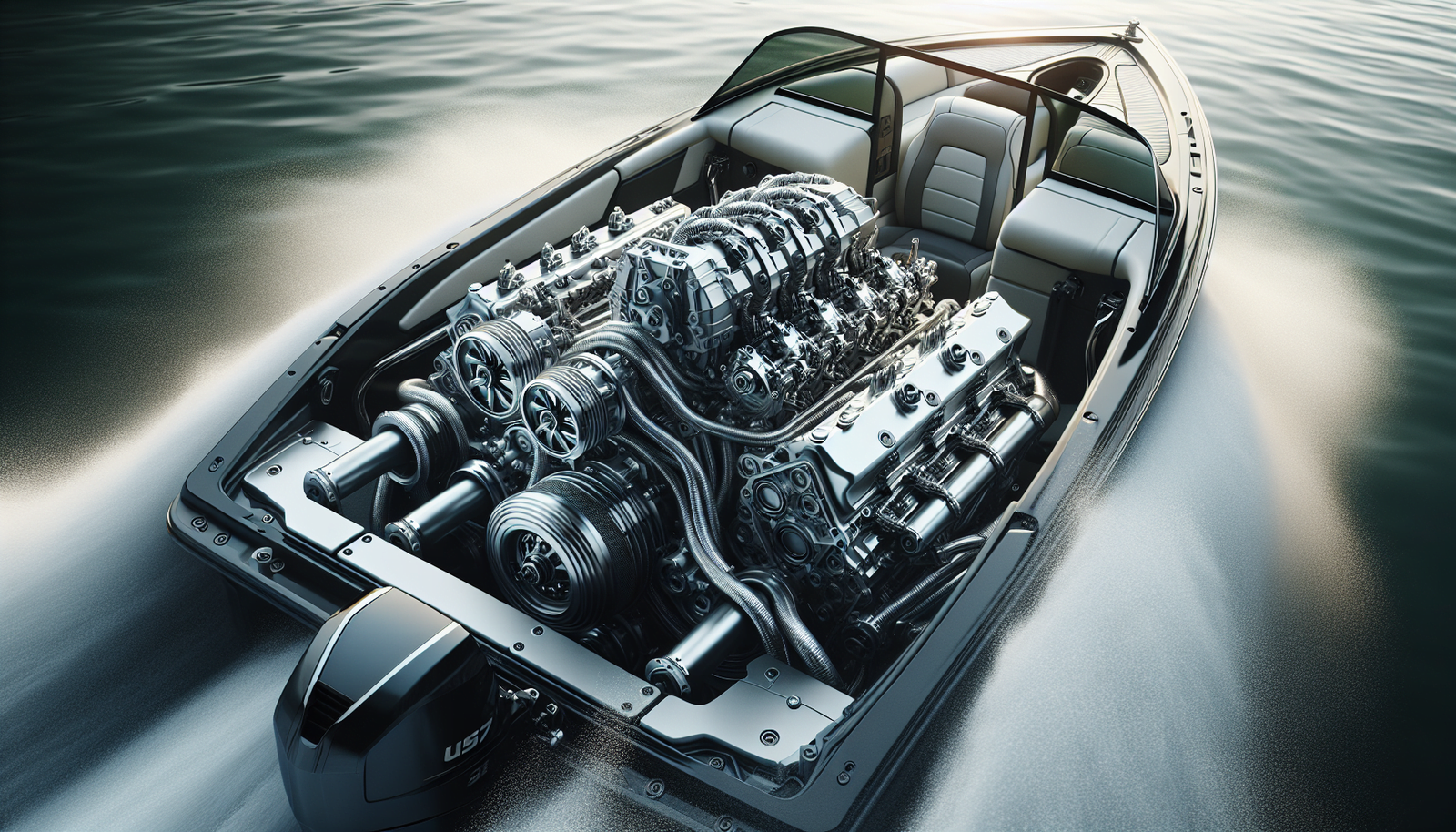Whether you’re a seasoned seafarer or a recreational boater, there’s nothing quite like the feeling of the wind in your hair and the gentle rock of waves beneath your vessel. Yet, being stuck with an underperforming boat engine can lead to sluggish movement and unnecessary headaches on your maritime adventures. “How To Upgrade Your Boat Engine For Better Performance On The Water” will put you back in the captain’s chair, providing you with the knowledge and insight you need to amp up your boat engine’s power. Giving you not just better speed, but also improved fuel efficiency and reduction in engine noise, making your time on the water not just more enjoyable, but also more efficient. So let’s set sail into the journey towards superior waterway traversal.

Understanding Your Current Boat Engine
So, you’ve decided to explore the prospect of upgrading your boat engine. That’s great! Before diving headfirst into the world of engine upgrades, there’s a critical first step – understanding your current engine. Familiarizing yourself with what’s already onboard will not only influence your upgrade decisions but also help you appreciate and measure the improvements post-upgrade.
Identifying your engine model
Your first task should be identifying your engine model. This information is usually found on an identification tag or plate located on the casing or painted directly on the engine itself. Knowing your engine model will arm you with vital data regarding its specifications, limitations, common issues, and compatibility with potential upgrades.
Analyzing current engine performance
Next, take the time to assess the current performance of your boat’s engine. Is it consistently running at its full potential or does it occasionally lag? Does it overheat? How fast are you going and is it as fast as you want? Noting down these observations will help pinpoint areas that may need improvements or upgrades.
Recognizing potential improvements
Finally, identify the areas where you’d like to enhance performance. Maybe you want more speed for those weekend lake races, or perhaps you need better fuel efficiency for long-distance sailing. Having a clear objective can help you navigate the potentially complicated process of engine upgrading.
Researching the Best Engine Upgrades
An educated decision is usually the best decision, particularly when it comes to engine upgrades. A lot of factors should be considered in your research to ensure you’re getting the best bang for your buck.
Exploring different types of upgrades
There are numerous types of boat engine upgrades ranging from simple add-ons to complex installations. These include installing new propellers for increased speed, adding a new exhaust system for better performance, or even swapping your old engine for a more powerful model. Research all available options and ascertain their viability for your specific boat and needs.
Comparing costs and benefits
Evaluate each potential upgrade’s cost-effectiveness. High horsepower might sound appealing, but it might not be necessary for your typical boating activities. Understand the cost-to-benefit ratio of each upgrade, including factors such as increased speed, better fuel efficiency, and extended engine lifetime.
Reading customer reviews and professional opinions
Aside from comparing costs and benefits, consider the opinions of others who’ve undertaken similar upgrades. Customer reviews and comments from industry professionals offer extra insights into potential issues, challenges, and successes. However, remember that what worked best for someone else might not necessarily be best for you.
Choosing the Right Engine Upgrade
After thorough research, it’s time to decide on the type of upgrade that suits your needs. This decision should be based on what you need, your budget, and striking a balance between achieving superior performance and maintaining fuel efficiency.
Determining what you need
Deciding what you need boils down to ascertaining your boating priorities. If speed is your priority, then consider upgrades that will increase horsepower. If fuel efficiency is key, look for options that lower fuel consumption without compromising performance.
Considering your budget
Your budget can significantly influence the upgrade path you choose. Depending on your resources, you might opt for a significant modification like replacing the engine or prefer smaller incremental upgrades such as swapping out for high-performance propellers that better suit your needs.
Balancing performance with fuel efficiency
A common conundrum in engine upgrades is trying to balance between achieving increased performance and compromising on fuel efficiency. Finding that sweet spot where your boat’s speed or power is enhanced without draining your fuel reserves too rapidly will make for a successful upgrade.
Preparing for the Engine Upgrade
You’ve done your research, made your decisions – now it’s time to prepare for the upgrade. Preparation includes acquiring the necessary materials, understanding the manual/instructions, and setting aside ample time for the project.
Acquiring necessary tools and materials
Before you begin, make sure you have everything you need. This can vary considerably depending on your specific upgrade, but typically includes specialized tools, new parts, and relevant safety equipment.
Understanding upgrade manual or instructions
Upgrades often come with manuals or instructions. These guides provide step-by-step instructions on how to perform the upgrade and should be thoroughly understood before starting.
Setting aside ample time for the upgrade
Performing an engine upgrade can take several hours or even span multiple days, particularly for beginners. It’s important that you don’t rush the process, so set aside ample time to ensure a smooth and successful upgrade.

Performing Engine Upgrade
Now is the moment of truth – the actual upgrade. Remember, patience is key here. Adhere to the instructions strictly, place safety above everything else, and don’t hesitate to seek help if things get too complex.
Following upgrade instructions strictly
The upgrade instructions are your roadmap. Make sure you follow them strictly to avoid damaging your new parts or, worse, your boat’s engine.
Taking necessary safety precautions
Never underestimate the importance of safety during an engine upgrade. Wear appropriate safety gear, ensure your workspace is well ventilated, and never rush through the process.
Managing upgrade complexities
A boat engine upgrade is a complicated undertaking that’s not without its share of challenges. If you encounter a particularly difficult step or aren’t confident about something, don’t hesitate to reach out to a professional for advice.
Testing the Upgraded Engine
After successfully performing the upgrade, it’s time to test your new engine. Begin with dry testing, followed by on-water performance testing and, finally, noting any significant changes in performance.
Initial dry testing
Dry test your upgraded engine first. This allows you to ensure that all parts are working as expected and there are no leaks or other problems.
On-water performance testing
Once you are satisfied with the dry testing results, you can take your boat to the water for the real test. Does the boat accelerate faster? Is the fuel consumption still sustainable? Don’t forget to test over various conditions to evaluate the full breadth of your upgrade’s impact.
Observing and noting changes in performance
While testing, be sure to observe and jot down any noticeable changes in performance. Take note of all positive changes so you can differentiate between before-and-after performance. Likewise, note any potential issues that could be addressed through fine-tuning.
Fine-Tuning the Upgraded Engine
The upgrade procedure doesn’t end at the testing stage. You’ll often need to fine-tune the engine further to optimize its speed, power, and overall performance.
Checking fuel efficiency
One of the things you’ll have to look at is fuel efficiency. Ensure that your improved performance doesn’t come with ridiculously high fuel consumption rates. If fuel use is too high, you may need to readjust or further tweak some aspects of the engine.
Optimizing speed and power
Likewise, you’ll want to refine your speed and power outputs to align with your boating needs. Run several tests to ensure that your engine’s performance matches your expectations and needs.
Making necessary engine adjustments
Don’t hesitate to make necessary adjustments based on your observations. Fine-tuning your engine is an iterative process, so be prepared to tweak things here and there until you achieve the performance you’re aiming for.
Preventive Maintenance After Upgrade
To ensure your upgraded engine continues running efficiently for a long time, regular maintenance is key. Check-ups should become part of your routine, as well as frequent oil changes and filter replacements. Occasionally, schedule inspections with professionals as well.
Regular engine check-ups
Regularly keep tabs on your engine’s performance and physical conditions. Look out for any signs of wear, rust, or other potential problems and address them as soon as possible.
Frequent oil changes and filter replacements
An engine’s oil and filter play a significant role in its performance. Changing them regularly ensures that your engine functions more efficiently and lasts longer.
Scheduling professional inspections
Even if you’re diligent with your maintenance, having your engine checked by a professional every once in a while is a good idea. They can spot potential issues that you might miss and provide expert advice on how to improve performance or prolong the engine life.
Dealing with Potential Problems After Upgrade
Upgrades don’t always go smoothly, and you might encounter problems along the way. Being prepared to resolve common issues, consult professionals when needed, and be able to understand the warranty and after-sales support options could prove crucial.
Resolving common upgrade issues
There are often common issues associated with certain upgrades. Familiarize yourself with these and be ready to resolve them should they arise. They often include things like increased vibrations, irregular engine sounds, or reduced fuel efficiency.
Consulting professionals for complex issues
When you encounter complex issues that you can’t resolve, it’s time to consult the professionals. They have the tools, experience, and knowledge necessary to diagnose and rectify these problems.
Understanding the warranty and after-sales support
Many upgrades come with a warranty and after-sales support. Be sure to understand the terms and conditions of these services, as they can save you a lot of trouble and expenses on potential repair or replacement costs.
Evaluating the Success of the Engine Upgrade
Once you’ve performed the upgrade, tested, and fine-tuned your engine, and dealt with any potential problems, the last step is evaluating the overall success of the engine upgrade.
Assessing increased performance on water
Bring your boat onto the water and assess whether there is an increase in performance. More power, improved speed, better maneuverability, and enhanced fuel efficiency are all indications of a successful upgrade.
Evaluating cost value of the upgrade
Next, evaluate the financial aspect of the upgrade. Was it worth the cost? Did it deliver the expected increases in speed or fuel efficiency? Make sure that the value you received was worth the investment you made.
Measuring the long-term reliability of the upgraded engine
Lastly, consider the longer-term implications of the upgrade. How has it affected the engine’s wear and tear? Has it enhanced or decreased the engine’s lifespan? Take the time to evaluate these factors as they directly influence the upgrade’s overall success and value.
There you have it. Upgrading your boat’s engine can be a significant project, but with diligent research, careful preparation, and meticulous implementation and follow-up, you can significantly enhance your boat’s performance and sailing experience.

